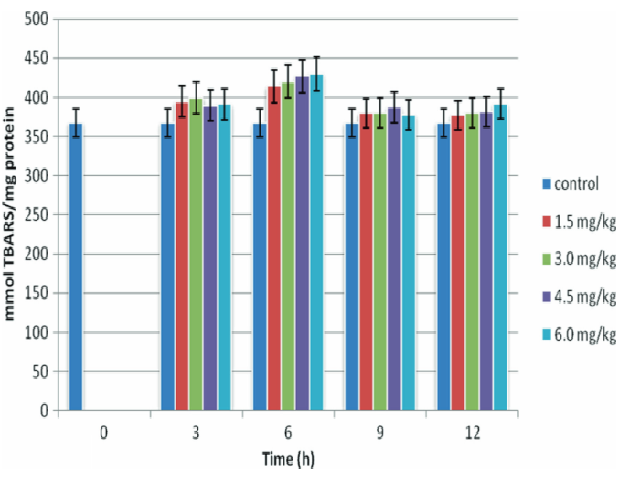Membrane Lipid Peroxidation of HbAA Erythrocyte of Non-Malarious Participants Administered with Quinine
DOI:
https://doi.org/10.5530/ax.2011.2.5Keywords:
Quinine, Lipid peroxidation, Erythrocyte, AntioxidantAbstract
The erythrocyte membrane is susceptible to lipid peroxidation due to its high content of polyunsaturated lipids. The present study ascertained levels of lipid peroxidation of non-parasitized erythrocytes of non-malarious male participants administered with quinine. Determination of erythrocyte lipid peroxidation was by a monitor of levels of thiobarbituric acid reactive substances, measured spectrophotometrically by taking the sample absorbance at 432 nm against a reagent blank at 24 °C. Fifteen (15) non-malarious male (59-79 kg) participants of confirmed HbAA genotype between the age brackets of 21-34 yr enrolled for this study. Three (3) participants per group were administered with quinine according to the corresponding doses: 1.5, 3.0, 4.5 and 6.0 mg/kg (control; n = 3). At regular time interval of 3 h for 12 h, blood samples were withdrawn for determination of erythrocyte membrane lipid peroxidation. Erythrocyte membrane of participants administered with quinine exhibited relatively high levels of lipid peroxidation in a dose dependent manner. Generally, within 0-6 h, the four adminstered doses of quinine caused a time dependent elevation of lipid peroxidation. Further increase in time (t > 6 h) showed decreasing levels of lipid peroxidation in participants administered with quinine. Generally, the levels of erythrocyte lipid peroxidation in the presence of quinine showed 2 phase profile. The first stage showed increasing levels of lipid peroxidation at t < 6 h after drug administration, followed by the second phase which showed decreasing levels of lipid peroxidation. The results showed that administration of quinine to non-malarious individuals elicited flux in erythrocyte lipid peroxidation.
Downloads
Metrics





